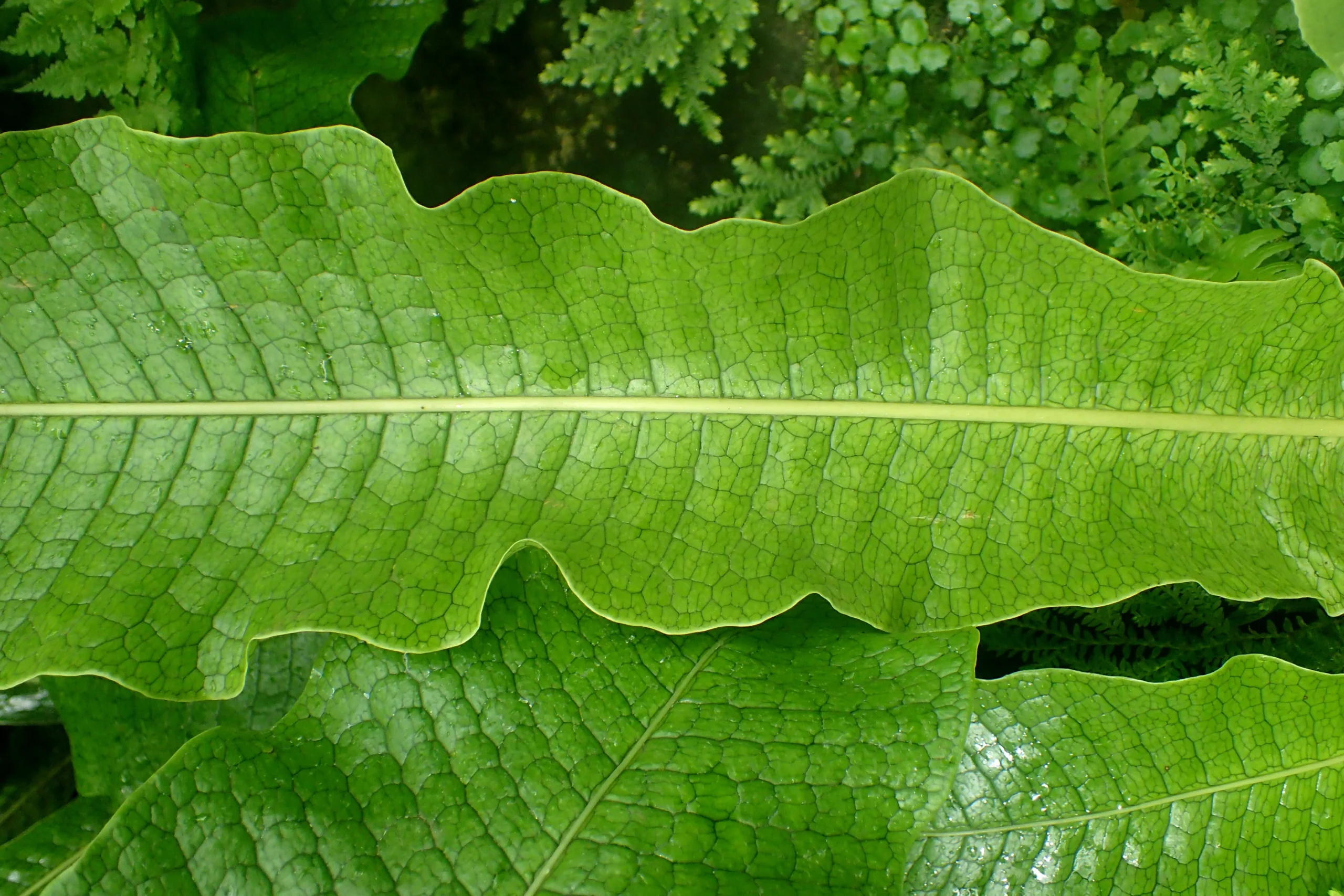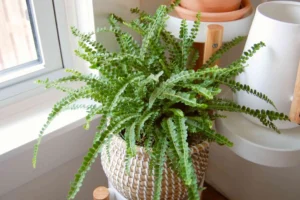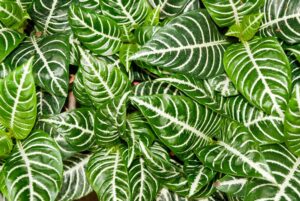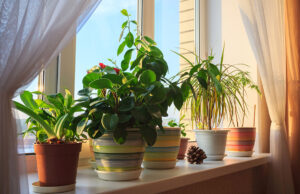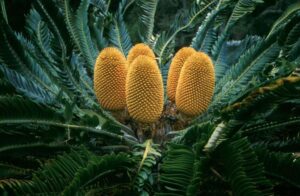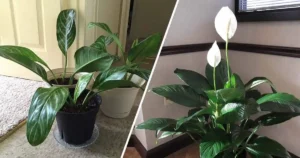This blog
This blog post is designed to offer comprehensive insights into the care, propagation, and enjoyment of Microsorum musifolium. By integrating practical advice with interesting facts, it aims to serve as a valuable resource for anyone looking to cultivate this prehistoric beauty in their home.
In the vast world of houseplants, few can rival the exotic allure and prehistoric charm of Microsorum musifolium, also known as the crocodile fern. This unique plant, with its distinctive scale-like leaves, hails from the dense rainforests of Southeast Asia and has quickly become a favorite among plant enthusiasts. Its ancient lineage and adaptability make it a fascinating addition to modern homes, offering a glimpse into a time when ferns dominated the Earth. Whether you’re an experienced gardener or a novice, this comprehensive guide will help you understand everything there is to know about caring for this prehistoric beauty.
On This Page
What is Microsorum musifolium?
Botanical Overview
Microsorum musifolium belongs to the Polypodiaceae family, a group of ferns renowned for their diversity and resilience. Native to Southeast Asia, this fern thrives in humid, shaded environments, often found clinging to trees as an epiphyte. Its name is derived from the Greek words “micro,” meaning small, and “soros,” meaning heap, referring to the small clusters of spores that the fern produces on the underside of its leaves. The species name “musifolium” translates to “banana leaf,” a nod to the broad, elongated shape of its foliage.
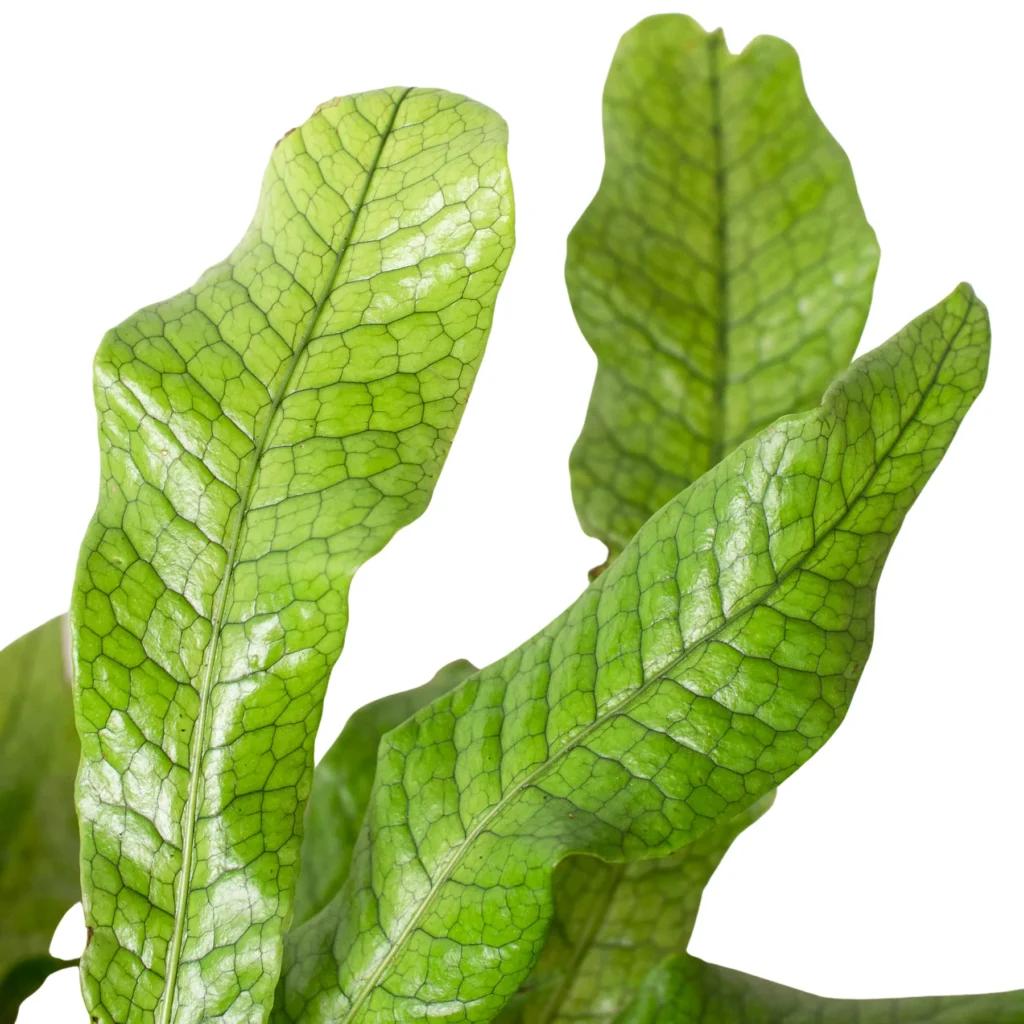
The crocodile fern is characterized by its thick, leathery leaves that can grow up to two feet long and six inches wide. The most striking feature of this plant is its unique leaf texture, which resembles the rough, scaly skin of a crocodile. This texture is not just for show—it helps the plant retain moisture and adapt to its native, humid environment. The leaves are typically a deep green, providing a lush, tropical appearance that makes it a standout in any indoor garden.
Unique Features
What sets Microsorum musifolium apart from other ferns is its remarkable leaf structure. The raised, scale-like pattern on the leaves not only adds visual interest but also serves a functional purpose. In its natural habitat, this texture allows the fern to conserve water, making it more drought-resistant than many other ferns. This unique adaptation is part of what has enabled the species to survive through millions of years of evolution, outlasting many other plant species.
Another fascinating aspect of the crocodile fern is its ability to grow both terrestrially and epiphytically. In the wild, it’s often found growing on the trunks of trees, where it absorbs moisture and nutrients from the air and debris around it. This epiphytic nature means that the fern doesn’t require soil to thrive, which can be an exciting option for indoor gardeners looking to create a more diverse plant display. When grown indoors, Microsorum musifolium can be mounted on a piece of wood or placed in a well-draining potting mix, offering versatility in how it can be displayed.
How to Care for Microsorum musifolium Indoors
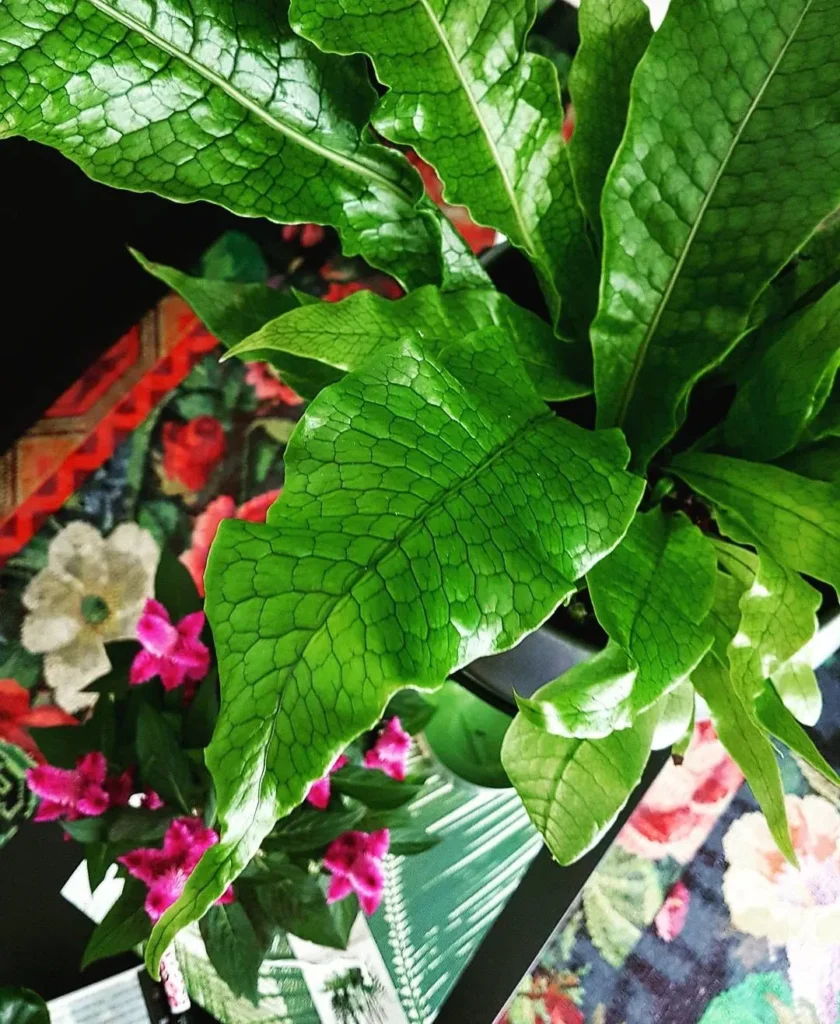
Caring for Microsorum musifolium requires an understanding of its natural habitat and specific needs. While this fern is relatively hardy, providing the right conditions will ensure it thrives and continues to add its unique beauty to your indoor space.
Light Requirements
Microsorum musifolium thrives in bright, indirect light, mimicking the dappled sunlight it would receive on the forest floor. Direct sunlight can scorch its leaves, leading to browning and damage, so it’s best to place the fern in a location where it will receive filtered light. A north or east-facing window is ideal, as these locations typically provide the right balance of light without exposing the plant to the harsh rays of the sun.
If natural light is insufficient, particularly during the shorter days of winter, you can supplement with artificial grow lights. LED grow lights are an excellent option as they provide the necessary light spectrum without producing excessive heat. Position the light about 12 inches above the plant and keep it on for 12-16 hours a day to mimic the natural daylight cycle.
Effects of Light Levels
It’s important to monitor your crocodile fern closely to ensure it’s getting the right amount of light. If the leaves start to lose their deep green color and become pale or yellow, this could be a sign of too much light. On the other hand, if the leaves begin to stretch or the plant seems to be growing more slowly, it might not be getting enough light. Adjusting its position in your home or altering your lighting setup can help address these issues.
Placement Tips
For the best results, place your Microsorum musifolium near a window that provides bright, indirect light. If your space has limited natural light, consider using sheer curtains to diffuse the sunlight or use reflective surfaces to help direct more light towards the plant. Remember, consistency is key—avoid placing the fern in areas where light levels fluctuate drastically throughout the day, as this can stress the plant.
Crocodile Fern Watering Schedule
Watering is one of the most crucial aspects of caring for Microsorum musifolium. This fern loves moisture, but like many houseplants, it’s susceptible to root rot if overwatered. The key is to maintain a consistent watering schedule that keeps the soil evenly moist without becoming waterlogged.
Watering Frequency
Typically, Microsorum musifolium should be watered once the top inch of soil feels dry to the touch. During the growing season (spring and summer), this may mean watering every 7-10 days. In the dormant period (fall and winter), you can reduce the frequency to every 10-14 days. Always use room-temperature water and ensure that the pot has proper drainage to prevent excess water from accumulating at the bottom.
Signs of Overwatering/Underwatering
Overwatering is the most common mistake when caring for ferns. Signs of overwatering include yellowing leaves, mushy stems, and a sour smell emanating from the soil. If you notice these symptoms, it’s crucial to let the soil dry out and adjust your watering routine. Conversely, underwatering will cause the leaves to wilt, turn brown, and become crispy. If this happens, gradually increase your watering frequency, but avoid drowning the plant in an attempt to compensate.
Watering Techniques
For best results, water your Microsorum musifolium thoroughly, allowing the water to soak through the soil and drain out of the bottom of the pot. Avoid letting the plant sit in standing water, as this can lead to root rot. If you’re using a tray or saucer beneath the pot, be sure to empty it after watering. You might also consider misting the leaves regularly to increase humidity around the plant, especially if the air in your home is dry.

Best Soil for Microsorum musifolium
Choosing the right soil is essential for keeping your crocodile fern healthy. In its natural habitat, Microsorum musifolium grows as an epiphyte, meaning it attaches to trees and absorbs moisture and nutrients from the air and surrounding debris. To replicate these conditions indoors, you’ll need a soil mix that provides excellent drainage while retaining some moisture.
Soil Composition
A well-draining potting mix is crucial for Microsorum musifolium. You can create an ideal mix by combining equal parts of orchid bark, peat moss, and perlite. This combination mimics the fern’s natural environment, allowing air to circulate around the roots while retaining enough moisture to keep the plant hydrated. Adding a small amount of activated charcoal can help prevent root rot by keeping the soil fresh and free of harmful bacteria.
Potting and Repotting

When potting your Microsorum musifolium, choose a container with drainage holes to prevent water from pooling at the bottom. The pot should be slightly larger than the root ball to allow room for growth. Repotting is typically necessary every 2-3 years, or when the plant has outgrown its container. To repot, gently remove the fern from its current pot, loosen the roots, and place it in a new container with fresh soil mix. Water thoroughly after repotting to help the plant settle into its new environment.
Humidity and Temperature Needs
Microsorum musifolium thrives in environments with high humidity, similar to its native rainforest habitat. Maintaining the right humidity and temperature levels is essential for its growth and overall health.
Ideal Humidity Levels
The crocodile fern prefers humidity levels of 60-80%, which can be challenging to maintain in a typical indoor setting, especially during winter months when heating systems can dry out the air. To increase humidity, you can place a humidifier near the plant, mist the leaves regularly, or use a humidity tray filled with water and pebbles. Grouping your plants together can also create a more humid microenvironment.
Temperature Tolerance
Microsorum musifolium is most comfortable in temperatures ranging from 60°F to 75°F (16°C to 24°C). It can tolerate slightly cooler temperatures but is sensitive to drafts and sudden temperature changes. Avoid placing the fern near heating vents, air conditioners, or drafty windows. If you live in a region with cold winters, ensure that the plant is kept away from cold windows or exterior doors to prevent temperature shock.
Microsorum musifolium Growth Rate
Understanding the growth rate of Microsorum musifolium is key to managing its care and knowing what to expect as it matures.
Growth Characteristics
The crocodile fern is a moderate grower, meaning it will develop steadily over time without requiring constant attention. Under optimal conditions, you can expect new fronds to emerge regularly during the growing season, typically from spring to early autumn. Each new frond unfurls slowly, adding to the plant’s overall size and fullness.
Managing Growth
To encourage healthy growth, provide consistent care by maintaining proper light, watering, and humidity levels. Fertilization during the growing season can also promote faster growth. Use a balanced, water-soluble fertilizer diluted to half strength every 4-6 weeks. Be cautious not to over-fertilize, as this can lead to salt buildup in the soil, which may damage the roots.
Pruning and Maintenance
While Microsorum musifolium doesn’t require frequent pruning, removing dead or damaged fronds can help maintain its appearance and prevent disease. Use clean, sharp scissors or pruning shears to cut away any brown or yellowing leaves at their base. Regularly cleaning the leaves with a damp cloth can also help keep the plant looking its best by removing dust that can block light and reduce the plant’s ability to photosynthesize.
Propagating Microsorum musifolium at Home
One of the joys of growing Microsorum musifolium is the ability to propagate it at home, allowing you to expand your collection or share this unique plant with friends.
Methods of Propagation
The two most common methods for propagating Microsorum musifolium are division and spore propagation.
Division
Division is the simplest and most reliable method of propagation. To divide your crocodile fern, carefully remove the plant from its pot and gently separate the root ball into two or more sections, each with its own set of fronds and roots. Ensure each division has a healthy portion of the root system and at least one growing point. Plant each section in its own pot with fresh soil mix and water thoroughly. Keep the newly potted divisions in a warm, humid environment to encourage root establishment.
Spore Propagation
Spore propagation is a more advanced method but can be a rewarding way to grow new plants from scratch. Microsorum musifolium produces spores on the underside of its leaves, which can be collected and used to propagate new ferns. To do this, place a piece of paper or a tray under a mature frond and gently tap it to release the spores. The spores can then be sprinkled onto a tray of moist, sterile potting mix. Cover the tray with plastic wrap to maintain humidity and place it in a warm, shaded area. It can take several weeks to months for the spores to germinate and produce tiny fern gametophytes, which will eventually grow into full plants.
Challenges in Propagation
While division is relatively straightforward, spore propagation can be challenging due to the time and patience required. It’s essential to keep the growing medium consistently moist and to provide the right environmental conditions for successful germination. However, for those willing to take on the challenge, growing a crocodile fern from spores can be a highly rewarding experience, offering the satisfaction of nurturing a plant from its earliest stages of life.
Common Pests Affecting Crocodile Ferns
Like all houseplants, Microsorum musifolium is susceptible to certain pests. Understanding how to identify and manage these pests is crucial for maintaining the health of your plant.
Common Pests
The most common pests that can affect Microsorum musifolium include spider mites, mealybugs, and scale insects.
Spider Mites
Spider mites are tiny, sap-sucking pests that can cause significant damage to your crocodile fern. They typically appear as small, red or brown dots on the undersides of leaves and can be identified by the fine webbing they produce. Spider mites thrive in dry conditions, so maintaining high humidity around your plant can help prevent infestations. If spider mites are detected, remove them with a strong stream of water or by wiping the leaves with a damp cloth. In more severe cases, use a miticide or insecticidal soap.
Mealybugs
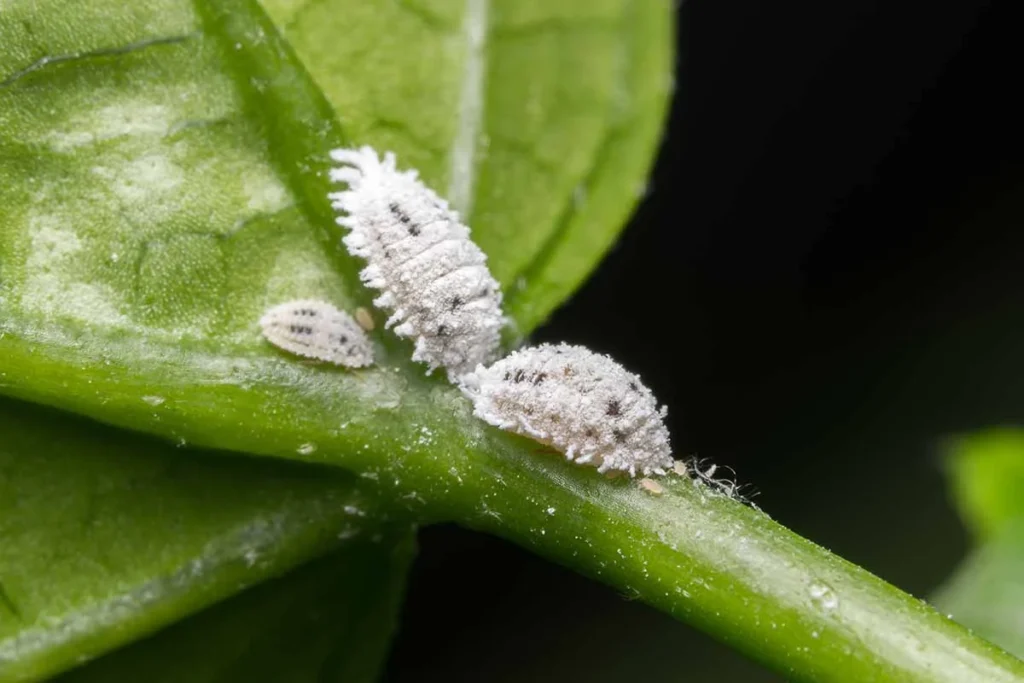
Mealybugs are small, white, cotton-like insects that cluster on the stems and leaves of plants. They feed on plant sap, causing leaves to yellow and drop. Mealybugs can be difficult to eradicate, but early detection is key. Wipe the affected areas with a cotton swab dipped in rubbing alcohol or use a neem oil spray to treat the infestation. Regularly inspect your plant to catch any new outbreaks early.
Scale Insects
Scale insects appear as small, brown or black bumps on the leaves and stems. These pests attach themselves to the plant and suck out nutrients, leading to weakened growth. To remove scale, gently scrape them off with a soft brush or treat the plant with insecticidal soap. For severe infestations, a systemic insecticide may be necessary.
Preventive Measures
To prevent pest infestations, regularly inspect your Microsorum musifolium for signs of trouble. Keep the plant clean by wiping down the leaves with a damp cloth, and ensure it is growing in the right conditions to minimize stress, which can make it more susceptible to pests. Quarantine any new plants before introducing them to your collection to prevent the spread of pests.
Microsorum musifolium in Terrarium Setups
Microsorum musifolium is an excellent candidate for terrarium setups, where its humidity-loving nature and unique appearance can be showcased.
Benefits of a Terrarium Environment
A terrarium provides a controlled environment that can mimic the humid, shaded conditions of the crocodile fern’s natural habitat. By placing your Microsorum musifolium in a terrarium, you can maintain consistent humidity levels, reduce the need for frequent watering, and create a visually stunning display.
Designing a Terrarium with Microsorum musifolium
When designing a terrarium for your crocodile fern, consider the following elements:
- Container: Choose a glass container with a lid to help retain moisture. The container should be large enough to accommodate the fern’s growth and allow for air circulation.
- Substrate: Start with a layer of gravel or small stones for drainage, followed by a layer of activated charcoal to keep the environment fresh. Add a layer of sphagnum moss to prevent soil from mixing with the drainage layer, and then add your potting mix.
- Planting: Place the Microsorum musifolium in the substrate, ensuring it has enough room to spread out. You can also add other humidity-loving plants, such as mosses or small ferns, to create a lush, jungle-inspired decor.
- Lighting: Position the terrarium in bright, indirect light, or use an LED grow light if natural light is insufficient.
Maintenance Tips
Maintaining a terrarium with Microsorum musifolium requires regular monitoring of humidity and temperature. Ensure the lid is removed periodically to allow fresh air to circulate, and keep an eye on condensation levels to prevent mold growth. If the terrarium becomes too dry, mist the interior with water. Trim any overgrown or yellowing leaves to keep the display looking neat.
Buy Microsorum musifolium Online: What to Look For
Purchasing a Microsorum musifolium online can be a convenient way to add this exotic plant to your collection. However, there are several factors to consider when buying plants online.

Choosing a Reputable Seller
When buying plants online, it’s crucial to choose a reputable seller who specializes in rare or exotic houseplants. Look for vendors with positive reviews, clear return policies, and detailed information about the plants they sell. Check whether the seller offers guarantees for the health of their plants upon arrival.
Inspecting Plant Health
Before making a purchase, review the seller’s photos of the plant carefully. Look for signs of healthy, vibrant leaves without spots, yellowing, or damage. The plant should appear well-established, with a robust root system if visible. If possible, ask the seller for additional photos or information about the plant’s care history.
Shipping Considerations
Shipping can be stressful for plants, so it’s important to consider the shipping methods used by the seller. Ensure that the plant will be packaged securely to prevent damage during transit. During extreme weather conditions, such as very hot or cold temperatures, it might be wise to delay shipping to avoid exposing the plant to potentially harmful conditions.
Supporting Conservation Efforts
As a rare botanical specimen, Microsorum musifolium should be sourced responsibly to avoid contributing to the depletion of wild populations. When buying online, consider purchasing from sellers who practice sustainable sourcing and contribute to conservation efforts. This not only ensures you’re getting a healthy plant but also supports the preservation of these unique species for future generations.
